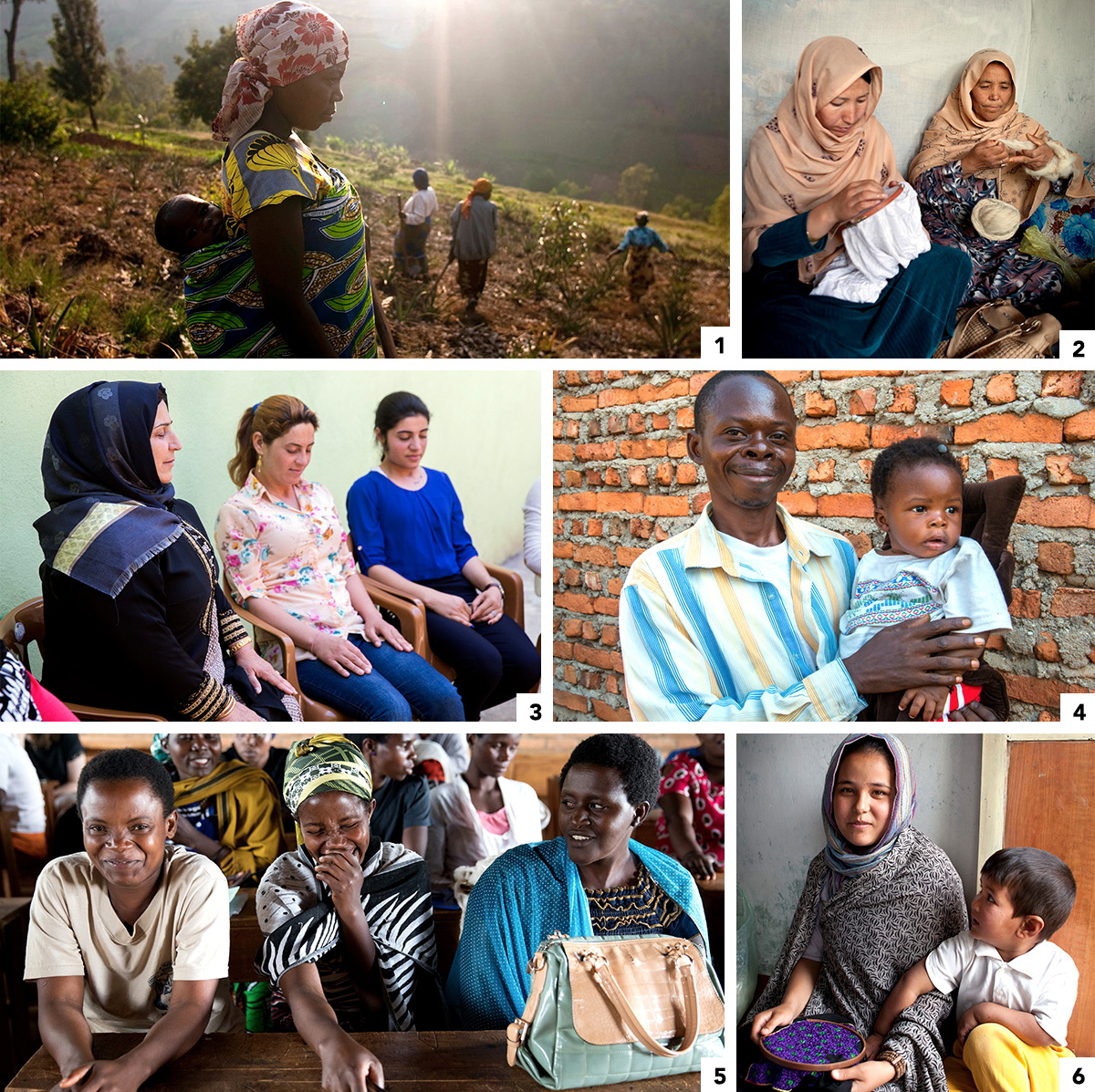Women for Women
Since 1993, Women for Women International (WfWI) has served more than 462,000 women survivors of war in Afghanistan, Bosnia-Herzegovina, the Democratic Republic of the Congo, Kosovo, Nigeria, Rwanda, South Sudan and Northern Iraq. With a long-term vision for sustainable change and development, WfWI works with the most marginalized and socially excluded women and gives them the tools they need to rebuild their lives. Through Women for Women International’s comprehensive 12-month program, women learn about their rights and health and gain key life, vocational, and business skills to access livelihoods and break free from trauma and poverty. WfWI’s comprehensive program also includes a $10 monthly stipend so women can practice saving.
Our program has a transformative impact on the lives of women and their families. On average, when women join our program they have a daily income of $0.34 dollars. That triples to $1.07 after graduating from our program. While before joining our program 30% of women use family planning, after the program 87% report using it. Before our program, 10% of the women we work with say they talk to other women about their rights. After our program, 89% say they do so.
In addition to our training program that enrolls thousands of women every year, WfWI works with men to engage them as allies and supporters of women’s empowerment in their communities. Our men’s engagement program has reached more than 15,000 men in countries like Afghanistan, Nigeria and Democratic Republic of the Congo.
Our work is largely driven by individual donors and sponsors. Anyone can sponsor a woman to go through our program for $35 a month. Sponsors get to know their “sister” and can send letters to them through our program.
In countries affected by conflict and war, Women for Women International supports the most marginalized women to earn and save money, improve health and well-being, influence decisions in their home and community, and connect to networks for support. By utilizing skills, knowledge, and resources, she is able to create sustainable change for herself, her family, and community.
1. A participant in Rwanda utilizes the agriculture skills she learned in the Women for Women International program. Many women in the program are mothers with children ranging from infancy to adulthood. Some mothers bring their children to class or to their vocational work depending on the age of the children. Pictured is the Dufatanya Cooperative, a community farm founded by graduated members of the WfWI programs in Rwanda. Photo: Les Stone.
2.Two women learn embroidery through Women for Women International-Afghanistan’s program. WfWI has been working in Afghanistan to empower women survivors of war since 2002. Through our program, women learn vocational skills, including animal husbandry, agriculture, tailoring, rug weaving, and handicrafts, business skills, and about their rights and health. Photo: Hazel Thompson.
3. Participants of Women for Women International’s programs implemented by local partners in Kurdistan Region of Iraq attend a relaxation therapy class. The classes serve as a safe space for women to come together and break the isolation that so often marginalizes them. WfWI works with local partners to provide support to displaced and refugee Syrian and Iraqi women. In addition to social and economic empowerment trainings, we provide psycho-social support to women in KRI as many of them are survivors of violence and war. Photo: Alison Baskerville.
4. Mokili Mputela is a graduate of Women for Women International-DRC’s men’s engagement program. He shares how much the program has taught him and talks about how his relationship with his wife has improved as he has more respect for her now. WfWI has worked with more than 15,000 men to engage them as allies and supporters of women in their communities and decrease gender-based violence.
5. A woman holds in a laugh during class at the Women for Women International Program in Rwanda. From rural villages to the national parliament where women hold two-thirds of the seats, women in Rwanda are leading the rebuilding of their country. In the aftermath of the devastating 1994 Genocide, the challenge of creating a lasting peace depended greatly on the actions of women, who were the majority of survivors. Photo: Hazel Thompson.
6. A young Afghan woman embroiders as her young son watches at Women for Women International-Afghanistan’s training center. WfWI serves the most marginalized women in Afghanistan and around the world. We have served nearly 110,000 in Afghanistan. 87% of the Afghan women we work with have no formal education. Photo: Hazel Thompson.
Click here to learn more about Women for Women




